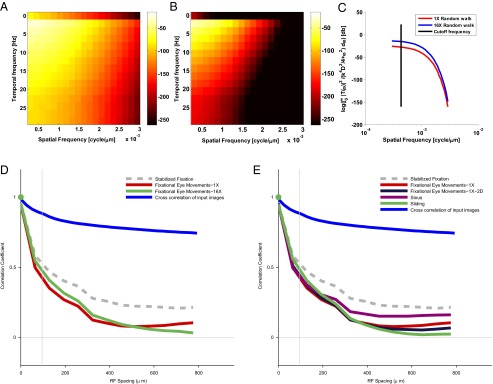Fig. 3.

The spatial correlation pattern with different motion parameters. (A) The spatiotemporal response of the retinal output for the 1X eye movement condition. (B) The spatiotemporal response of the retinal output for the 16X eye movement condition. (C) The logarithmic plot of the output power spectrum of the spatial frequencies, where we summed over temporal frequencies to obtain the dependence on the spatial frequencies alone. (D) Mean correlation in response to enlarged (16X) eye movements, compared with the motion pattern in Fig. 2. The drop of the correlation was not strongly associated with the amplitude of the motion. (E) Correlations in response to various types of motion: 2D eye movements, sinusoidal motion, and sliding motion. The differences in the pattern of correlation between different types of motion are small compared with the stabilized fixation response.
